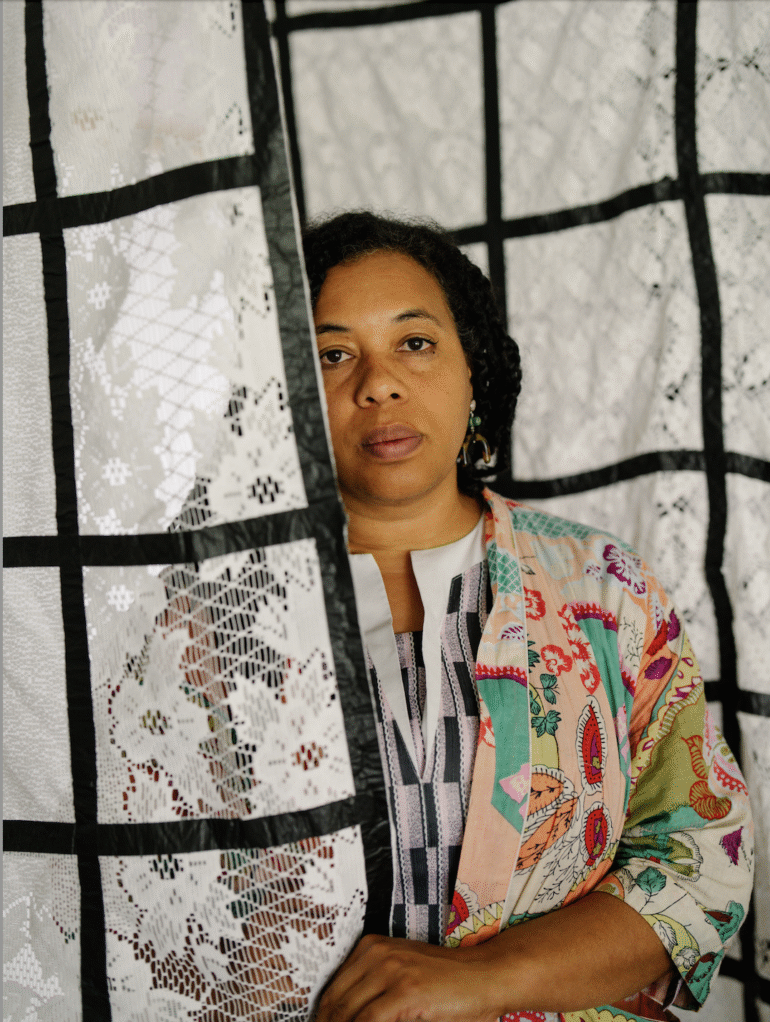In this edition of Culturalee in Conversation, we delve into the evocative and boundary-pushing work of UK-based artist Sonia E. Barrett. Known for her striking use of found objects, ranging from antique furniture and human hair to archival maps, Barrett’s practice reconfigures how we relate to nature, history, and tradition. Through material transformation, she challenges dominant narratives and disrupts the certainties we often attach to the past.
Barrett’s work confronts the lingering legacies of colonialism by objectifying and recontextualizing the very things that have historically been used to categorize and control humans, animals, and natural elements. The result is a body of work that is as visually arresting as it is intellectually rigorous, creating space for new ways of seeing and understanding.
With a recent public installation commission titled 9 Nights for the City of London, and upcoming projects including a residency and exhibition with Fountainhead in Miami, and group shows at Gallery OCA and Messum’s Gallery during Frieze London, Barrett continues to expand the conversation around materiality, memory, and meaning. Sonia gives some insights into her evolving practice, the stories embedded in objects, and how art can be a portal to reimagining the world around us.
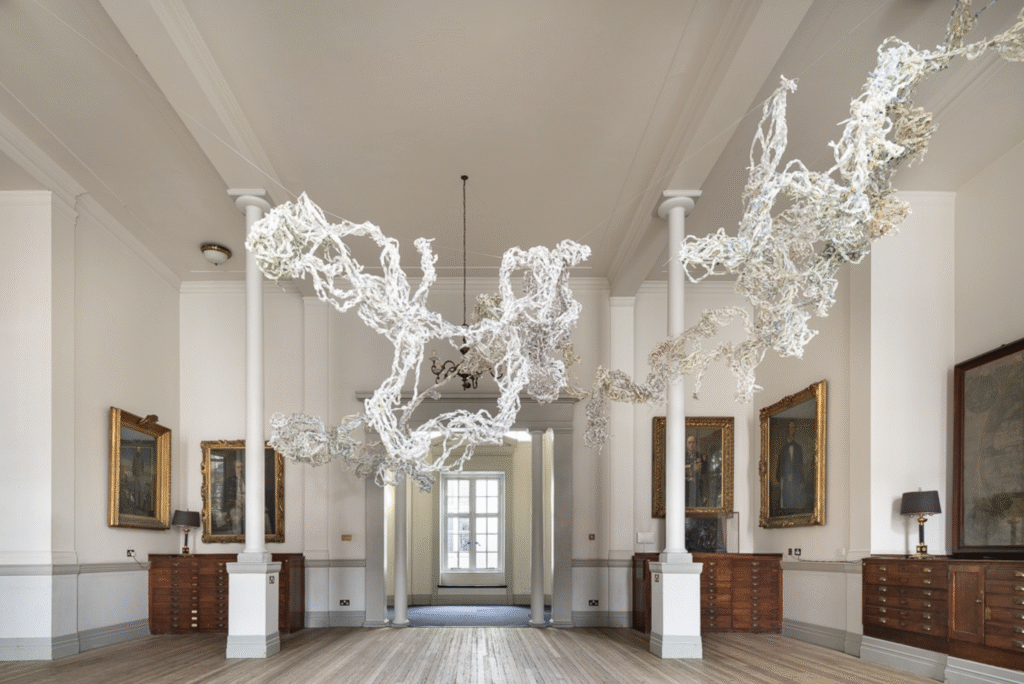
Your work often reshapes found objects—like historical furniture, hair, and maps—to challenge our understanding of history and nature. What draws you to these materials, and how do you choose them for a given piece?
I use these materials because they relate to our everyday lives; they are in contact with our bodies and hands now and have been in the past. I work primarily with things that distill something from the past that we could honour and learn from now. In antique wooden furniture, I can feel the tree, the people who lived around it, and the soil they shared. All of these are, in effect, put into service overseas in European houses of multigenerational wealth. All of these different lifeforms have become mere resources to be used and consumed. I work with wooden furniture that has already been anthropomorphised, having the feet of an African lion or cheetah, adding a person and sometimes an ore to create a compounded body where multiple losses can be felt.
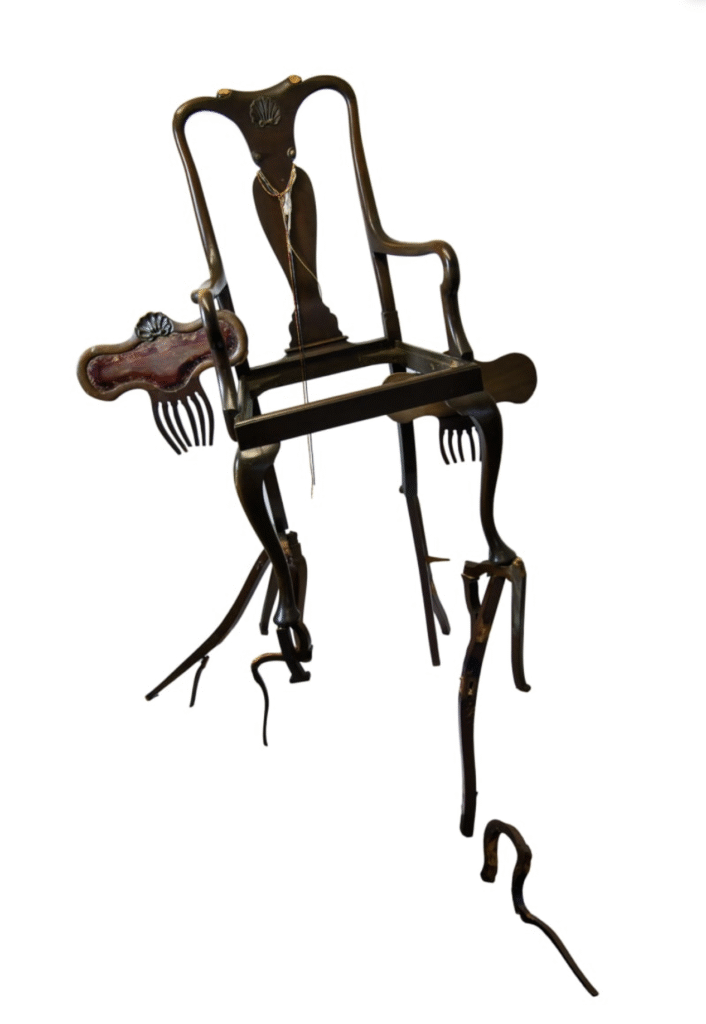
In your practice, you address the objectification of animals, humans, and the natural world. How do you see art as a tool for confronting the legacies of colonialism embedded in everyday objects?
Art is a tool for widening and deepening things and creating more and better questions. Artistic research helps me to meet the legacies of colonialism in the everyday. I open up objectification; it’s a bigger question that relates to colonial thinking, but is also beyond that. This bigger question is where many of my furniture pieces sit, and it is not really explainable.” Sonia E. Barrett
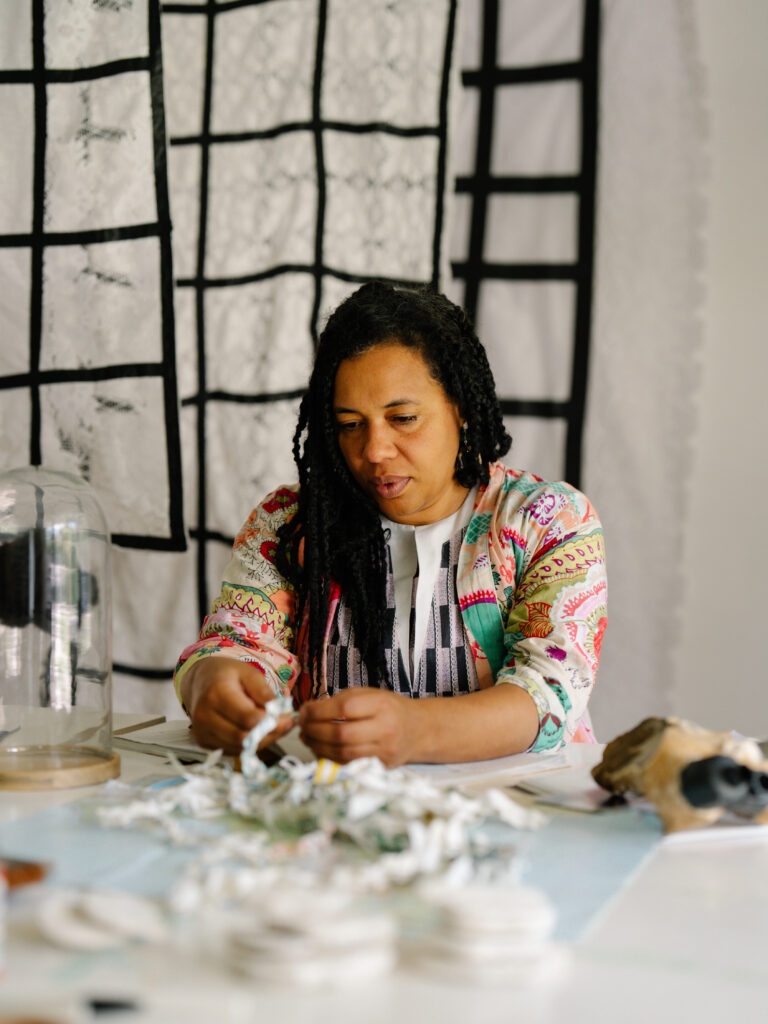
You’ve described your composites as creating new questions where there was once certainty. Can you share an example of a work that particularly disrupted a traditional narrative or expectation?
We are sure that furniture is incapable of feeling or thinking. Still, I aim to allow multitudes to share an experience of service and extraction, and position these as silenced for now, not incapable of speech, their own intelligence ignored. This happened to indigenous peoples, enslaved people (which is in my heritage) and fauna; they were mainly classified as the same sort of thing. I aim to help envision the bodies that enable the chair, which denotes a particular lifestyle that we are taught to admire in grand houses across traditional national trust properties—a lifestyle that is somehow inherently valuable and aspirational. I was dragged to too many of these houses as a child and was always a bit confused about what I was actually supposed to marvel at and where the bodies were that enabled it all.
When I work in stone, it is not the traditional narrative of the carver revealing the figure in the stone. Instead, I gather and work with stone fragments that resemble bones found in fields. This is an inexpensive way to work with stone. Most of my practice is totally under-equipped. My practice is very Caribbean in that I make do with whatever materials I have, stretching them to create something out of nothing. My work with Flint disrupts a traditional narrative of colonial battle as being heroic and only at the cost of black and brown people. It centres the narrative of a crustation. Who forms the burrow into which the flint flows and often dies in this home. It traces the stones as they are piled to take land from English commoners and create churches, manor houses and walls. The deaths from the first industrial dust-related work, cutting this stone, are known as “knapper’s lung”. Finally ending at the squared off flint that is used to spark guns, including early machine guns across the empire, killing the global majority. All these stories inform the appearance of the work, which features many suspended stones washed with the skin tones of all the different people who lose their lives on this journey. The rocks take on the appearance of a kind of meat. This work envisions a lengthy narrative that challenges the political parameters of British Imperial loss, widening and deepening them.
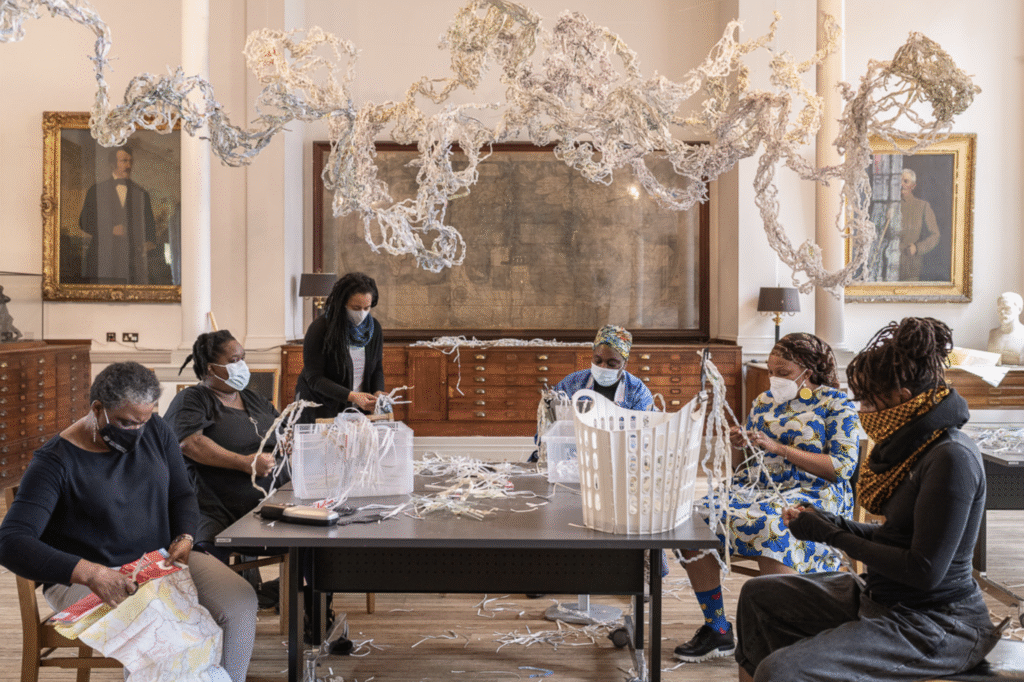
Your recent commission, 9 Nights, with the City of London, sounds compelling. Can you tell us more about that project and the story or intention behind it?
I was commissioned to respond to the statues of enslavers in the London Guildhall by the City. I have a practice that includes performing furniture, and my very early work was with tablecloths. After research, I was surprised to discover a little-known ceremony in the City of London that has been practised annually since 1211, where debts are witnessed as paid using a chequered remembrancer tablecloth and a table. Each square represents a debt, and objects placed on the square are its payment. Then the square is filled, the debt is said to be paid fair and square.
I reframe this ceremony by remaking the remembrancer cloth out of tablecloths that look similar but have been on very different tables. I tape the chequered design from the original cloth onto my grandmother’s West-Indian tablecloths and onto antique European tablecloths. What all the tablecloths have in common is that they contain lots of lacy open spaces, and these spaces are a visual clue to the infinite losses to humanity and nature that are debts that remain outstanding and are forgotten.
I propose actively reframing the ritual by gathering people wearing the cloth to rethink new metrics that relate to the debts to nature and people that are continually outstanding.
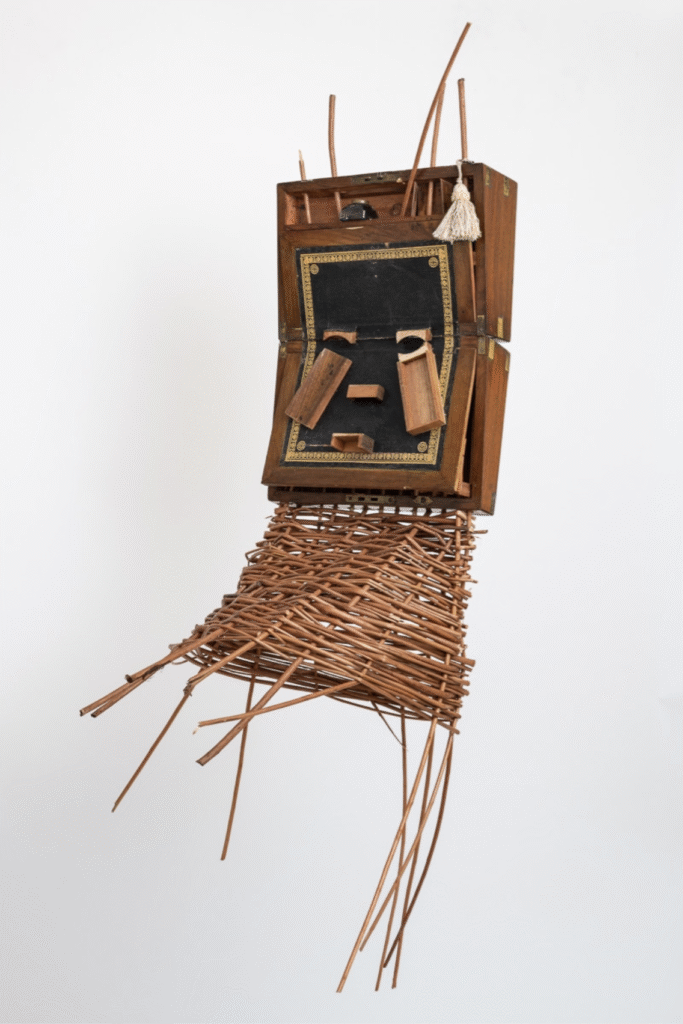
There’s a strong sense of reorientation in your work–inviting viewers to think outside dominant traditions or hegemonies. How do you hope audiences engage with or respond to this reframing?
Just engagement is an honour, really. I have come to expect quite strong feelings from people who hold some of the material culture of Britain dear. I hope they will not respond with the age-old trope that I am an angry black woman just smashing things up, but I have come to expect that too. I hope that people who encounter the work will never rest in country houses, which, for me, are spaces predicated on death in the same way again. That they will become reluctant to take tropical hardwoods at the very least, and consider what facilitates their comfort, and widen an appreciation for intelligent lifeforms beyond the human. That said, it is often impossible to disentangle yourself from structures of exploitation. I made a work unpacking that, which shows me being the bed and getting in the bed: I saw off the leg and use my arm, which with a floored fist looks just like a Queen Anne bed leg. It was a response to Fanon’s quote, “Those in the First World need to wake up from their beauty slumber and come to the aid of those in the Third World”. As someone with parents from the so-called Third World and living in the so-called First, life can be like being the bed and trying to sleep in it. This “brown” space is moving beyond race as globalisation ramps up. I also want to have the space to move beyond audiences and have larger numbers of people engage in braiding maps, making remembrancer cloths and inking stones. I think we all need the time that making art affords to rethink and re-feel things.
You have several exciting exhibitions and residencies coming up, including at Fountainhead in Miami and Messum’s Gallery in London during Frieze. How are these different contexts influencing your current creative direction?
I have an ongoing focus on London, its life energy and history. Spending time in Miami has made me even more aware of how my practice relates to London’s buildings. My practice has been expanding and broadening, and it remains group-driven. These different contexts keep letting me know that this is a fruitful direction.
Your work blends plants, animals, elements, and people in visually arresting ways. How do you approach the intersection of the natural and the human-made in your art?
Thank you. Early on, I focused on the space where Europeans have intervened in humans, plants, animals, and ores, transforming them against their will by ignoring their sentience and “thingifying” them. Later works try to understand how class intersects beyond race. I always strive to include a solution or an open window in my work, even when the door is shut. If it’s a bad day, I don’t get there. I always hope people can look at the work in the context of the whole series, but with 101 furniture works alone, I appreciate that people are just busy. Art is not as important as life.
Find out more about Sonia E. Barrett here.


